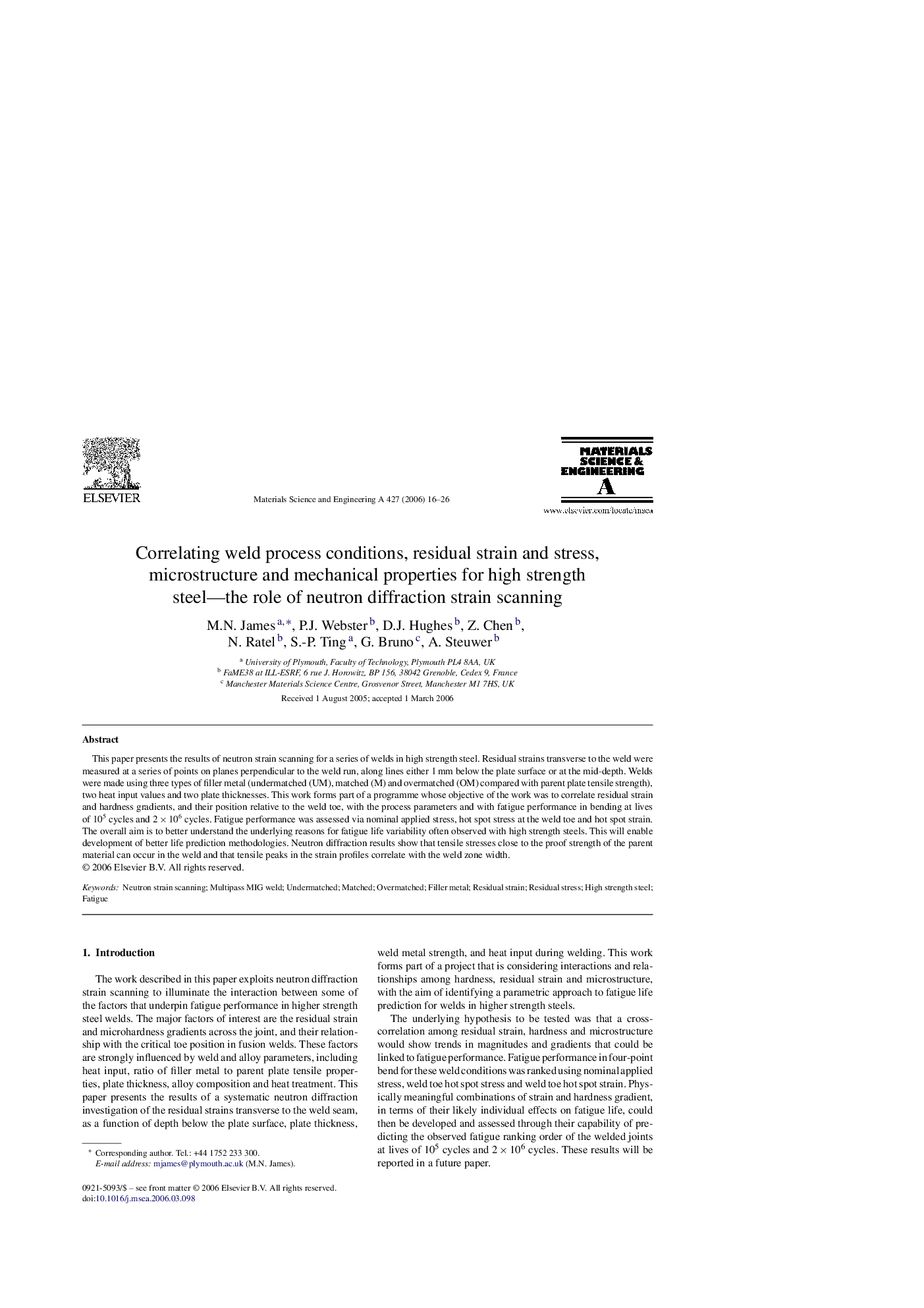| Article ID | Journal | Published Year | Pages | File Type |
|---|---|---|---|---|
| 1585697 | Materials Science and Engineering: A | 2006 | 11 Pages |
Abstract
This paper presents the results of neutron strain scanning for a series of welds in high strength steel. Residual strains transverse to the weld were measured at a series of points on planes perpendicular to the weld run, along lines either 1Â mm below the plate surface or at the mid-depth. Welds were made using three types of filler metal (undermatched (UM), matched (M) and overmatched (OM) compared with parent plate tensile strength), two heat input values and two plate thicknesses. This work forms part of a programme whose objective of the work was to correlate residual strain and hardness gradients, and their position relative to the weld toe, with the process parameters and with fatigue performance in bending at lives of 105 cycles and 2Â ÃÂ 106 cycles. Fatigue performance was assessed via nominal applied stress, hot spot stress at the weld toe and hot spot strain. The overall aim is to better understand the underlying reasons for fatigue life variability often observed with high strength steels. This will enable development of better life prediction methodologies. Neutron diffraction results show that tensile stresses close to the proof strength of the parent material can occur in the weld and that tensile peaks in the strain profiles correlate with the weld zone width.
Related Topics
Physical Sciences and Engineering
Materials Science
Materials Science (General)
Authors
M.N. James, P.J. Webster, D.J. Hughes, Z. Chen, N. Ratel, S.-P. Ting, G. Bruno, A. Steuwer,
